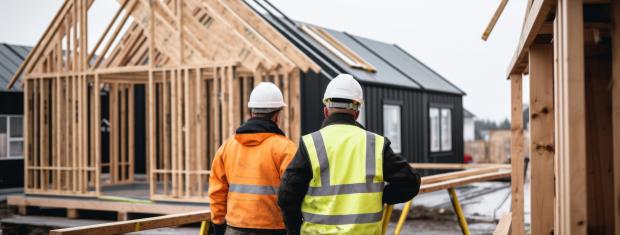
5 Key Tactics to Safeguard Construction Projects Against Water Damage
Water damage can be a significant setback for construction projects, leading to delays, expensive repairs, and potentially even compromising the structural integrity of buildings. Water has the potential to infiltrate the property through various channels including surface water flooding, temporary or uncovered roof systems, wind-driven rains, water service supply lines, drain lines, and more.
According to Risk & Insurance, water damage is a leading cause of commercial property claims, totaling nearly $500 million in 2021 alone. With repair costs at record highs, it’s crucial to protect your building and supplies from water damage.
Creating a Unique Jobsite Water Damage Prevention Plan
To prevent water damage during construction, the initial and most crucial step is to develop a site-specific plan tailored to each project's unique requirements, considering factors such as location, topography, construction methods, and intended occupancy. The following five tactics will help you create an effective plan:
- Initiate grading systems and groundwater controls. Proper grading will help direct water away from the building. Prioritize any grading needed on the site as soon as possible. Ensure drains remain clear throughout the construction process and have a functioning pump available in case water needs to be removed from low lying areas, pits, excavations, etc.
- Protect materials, supplies and building systems. Common construction materials like drywall, ceiling tiles, and electrical components are highly susceptible to water damage, so do your best to wait for these items to be delivered until the building is watertight. If they must arrive beforehand, make sure to protect materials from the elements by covering them with a tarp and using pallets to raise them up off of the floor.
- Prepare for severe weather and storms. Monitor the weather closely throughout the construction process. Ensure interior finish work such as drywall, paint and trim work on floors does not begin until walls, window openings and roofs are sealed or in place. If work must begin prior, apply wind-resistant plastic sheeting and other waterproofing methods, such as temporary roof systems, to protect these areas of the project.
-
Place water sensors in appropriate areas near major appliances/systems. Interior systems/appliances such as HVACs, water heaters, and sprinkler systems can all result in significant water damage known as “non-weather-related water damage”. Sometimes these systems or their adjacent pipes can leak undetected and lead to significant damage.
Water sensor technology can now detect these types of intrusions and alert risk managers before they cause major damage. Consider installing flow alarms or water detectors in areas susceptible to damage. Where applicable, protect pipes from freezing temperatures with permanent building heating systems.
- Execute Routine Building Inspections. Prepping for potential water damage is important whether or not inclement weather is predicted. At the end of each workday, check over several important areas:
- Shut all windows and doors
- Secure temporary tarps or roofs
- Scan plumbing for any visible leaks and ensure all water faucets are completely shut off.
It’s a good idea to train all of your crew on steps to take in the event of water damage so they are prepared to respond to a real-time water emergency in a timely manner. Response time is key to mitigating a water damage event.


